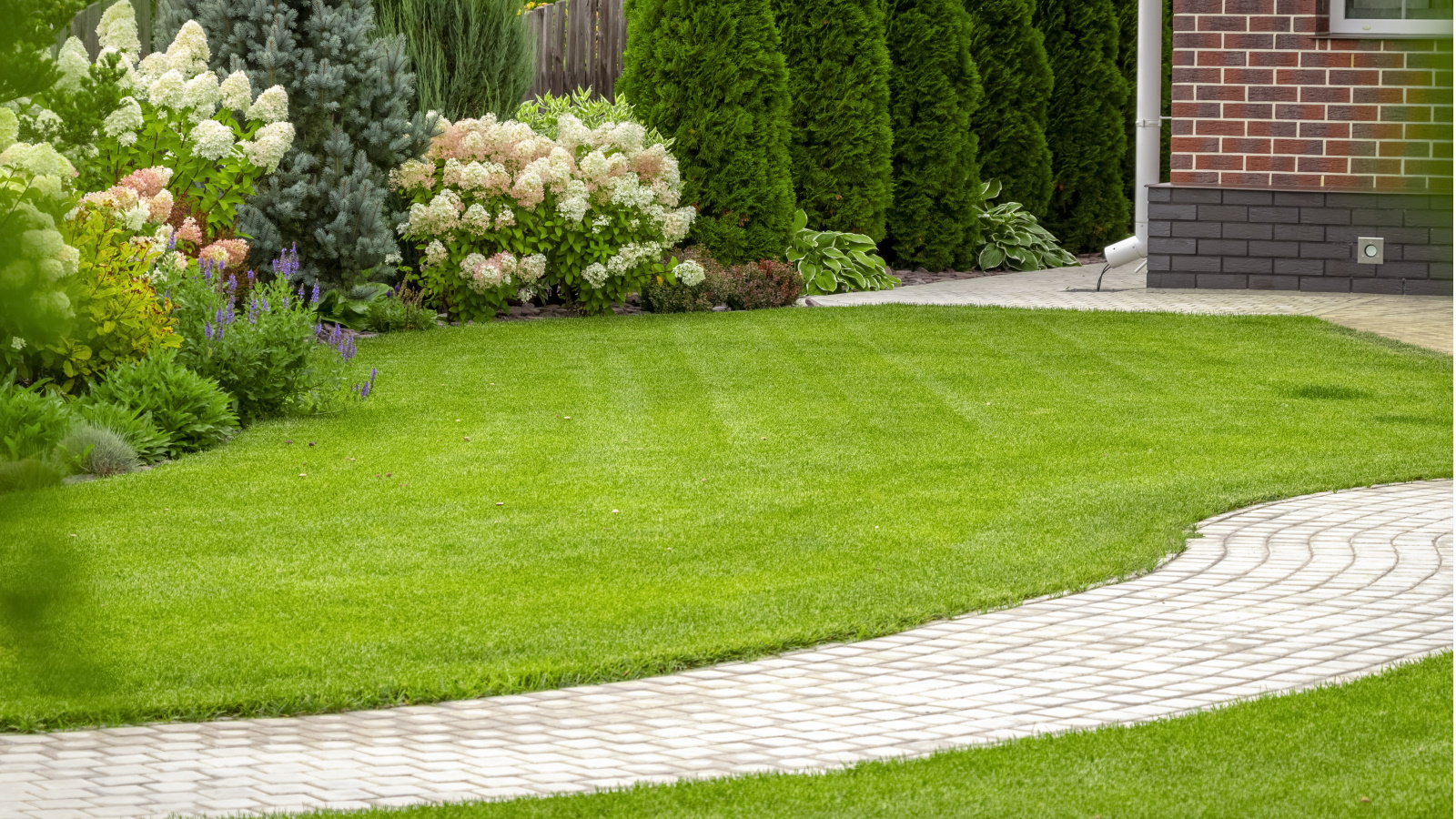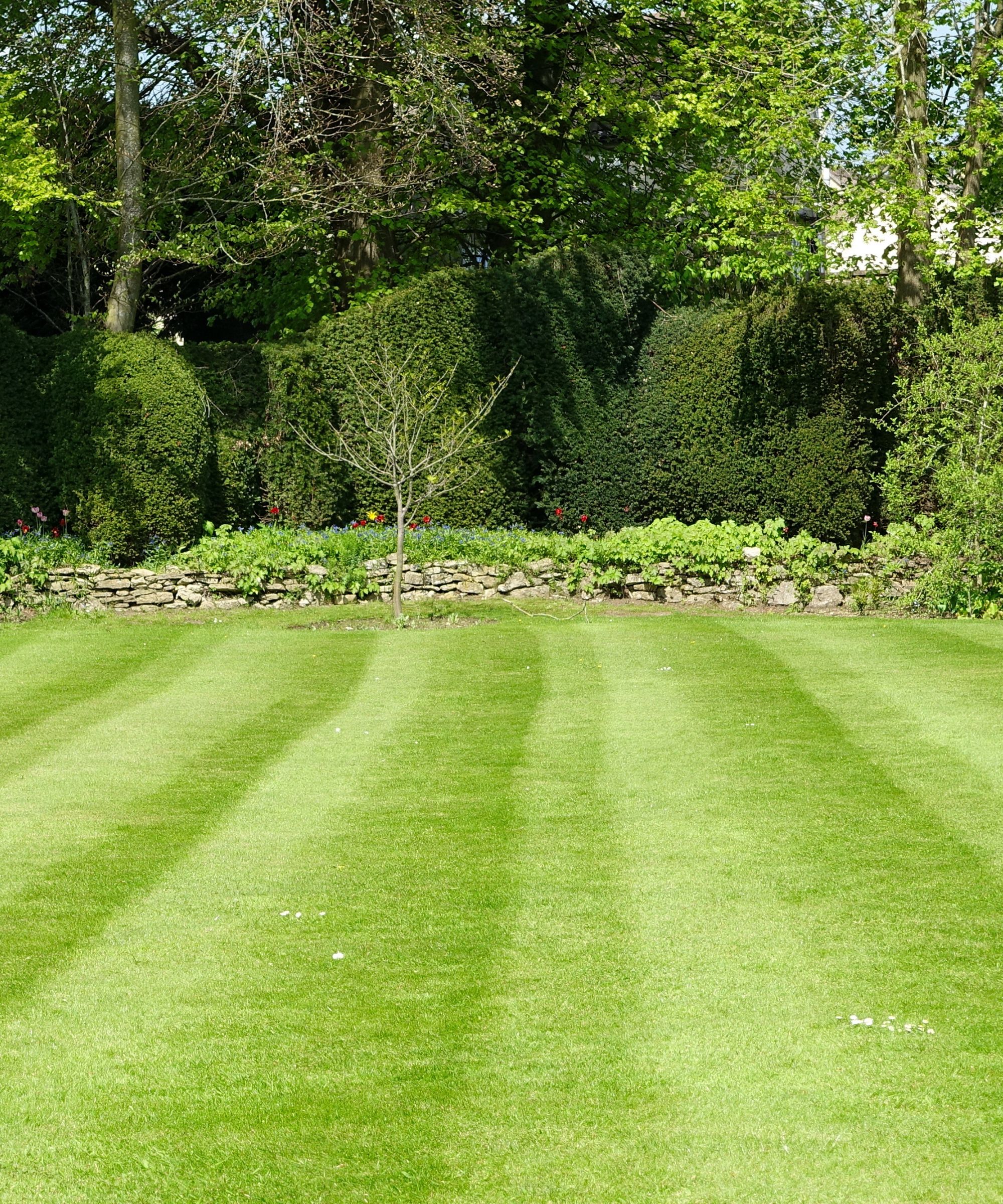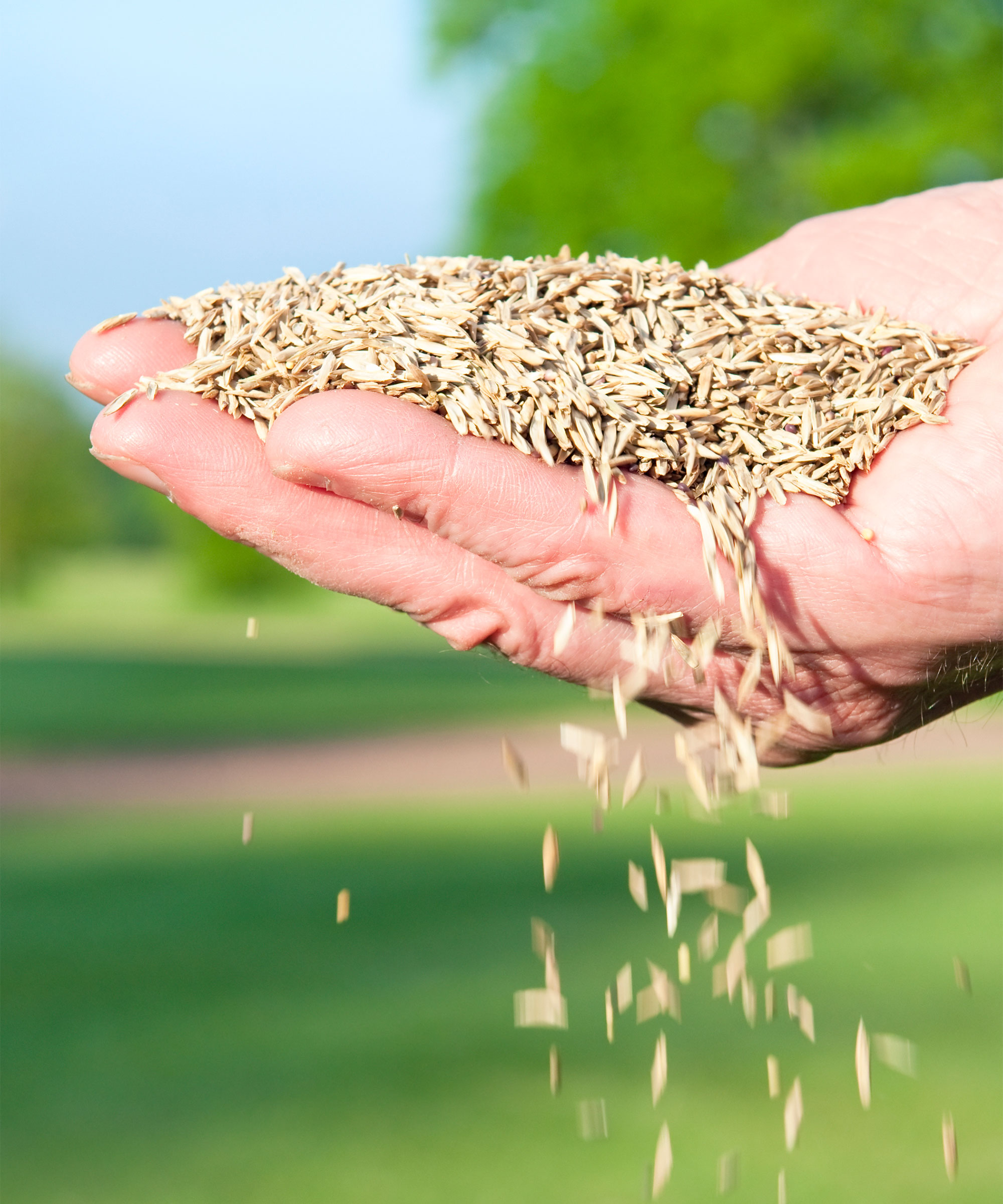
It can be easy to forget about your lawn in fall, but this is actually a very important time of year for lawn maintenance. Overseeding in fall, for example, can often make the difference between lush summer grass and unsightly patchy growth.
If you are on a mission to make a lawn green and thick, add overseeding to your fall lawn care list. It's an easy and relatively quick method to treat your entire lawn in one go, and a sure-fire way to rejuvenate your lawn and improve the look of your yard for summer.
We have spoken to lawn care experts to learn when to overseed your lawn in fall and how to do it to grow the best grass year-on-year.

Why overseed a lawn in fall?
If you're wondering what overseeding is, it refers to a seed spreading technique that encourages thicker lawn growth. You can overseed your lawn at different times of year, but doing it in fall will get your grass ready for summer.
The best time to overseed your lawn in fall

'The best time to overseed your lawn in fall is from late August to mid-October. During this period, the soil is still warm, the air is cooler and there’s usually more moisture, creating ideal conditions for seed germination,' explains Phil Catron, lawn care expert from NaturaLawn.
'By overseeding early in fall, you give the new grass plenty of time to establish strong roots before winter, setting the stage for a healthy, vibrant lawn in spring,' Phil adds.
It's a good idea to choose a day with mild weather, preferably after rainfall, so your lawn is moist but not muddy. Selecting a day with little wind will also reduce the chance of your grass seed being blown away. On top of this, you avoid summer droughts which will hinder the ability for seeds to germinate.
'Overseeding in fall also helps create a thicker, healthier lawn by filling in bare spots and thinning areas, which reduces the chances of weeds taking hold,' says Phil. This will make it easier to kill weeds but not grass when the warmer months comes around. 'It also introduces new grass varieties that can enhance your lawn's resistance to diseases and pests,' Phil adds.
Successful overseeding in fall also encourages a uniform lawn that is prepared to endure harsh winter temperatures and conditions.
How to overseed a lawn in fall

If you know how to plant grass seed, the process of overseeding is very similar. When overseeding, however, you will want to mow any existing grass to around one inch in length and rake any thatched areas of grass, using this rake from Amazon. You will likely notice clues that your lawn is in trouble in the form of common lawn problems, like yellowing, which may indicate a need for overseeding.
It's important to aerate the lawn before spreading your lawn seed evenly across the area. 'Once the holes are made, seed can be applied to the lawn. Upon being applied, the seed falls into the pockets or channels created by aeration, increasing its access to these elements, as well as increasing the amount of seed to soil contact,' explains Rob Palmer, lawn expert at Lawn Squad. 'The more direct seed to soil contact you can create the better germination you will achieve,' he adds.
You can use lawn seed of your choice, like this sun and shade grass seed mix from Walmart. Overseeding can then be done across a small patch of dying grass or your entire lawn if required. You might find this spreader for seed from Amazon helpful for getting the job done.
'Keep it well watered for the first 10-15 days. That's pretty much all it takes,' says Craig Elworthy, founder of Lawnbright. Use this garden hose from Walmart to water your freshly seeded lawn well.
FAQs
Should I fertilize before or after overseeding?
If your lawn has not been fertilized recently, it's a good idea to fertilize lawn with a lawn starter fertilizer before overseeding. Adding fertilizer to your lawn will encourage germination by providing the right nutrients for initial growth. You will want to avoid standard fertilizer for established grass as this rarely has the nutrients needed for root development.
Do I need topsoil when overseeding?
When overseeding your lawn you do not need topsoil. Instead, consider laying compost or a lawn starter fertilizer to encourage growth and germination. You should also avoid laying topsoil over freshly laid seeds. Although this is through to protect the germinating seeds, it can smother them and make it difficult for young shoots to emerge. Preparing the soil with proper aeration is a better technique that allows for protection.
'When possible, avoid heavy foot traffic on your lawn for the first few weeks after overseeding as the new grass is delicate,' advises Phil Catron. As long as moisture levels are kept up, your lawn seed should germinate and new grass will emerge. Although, you should then stop watering your lawn in fall before the first frost kicks in.







